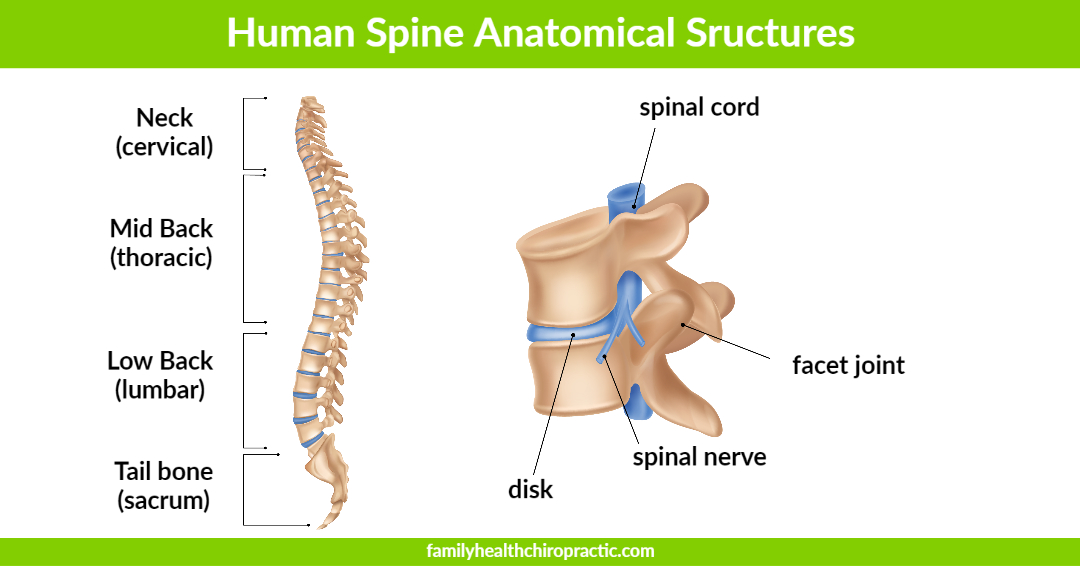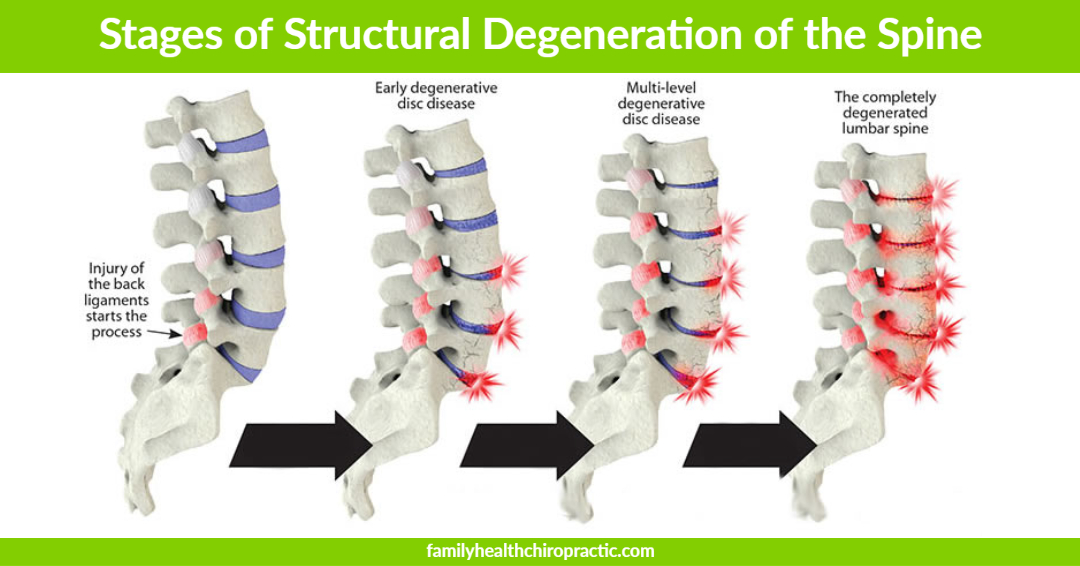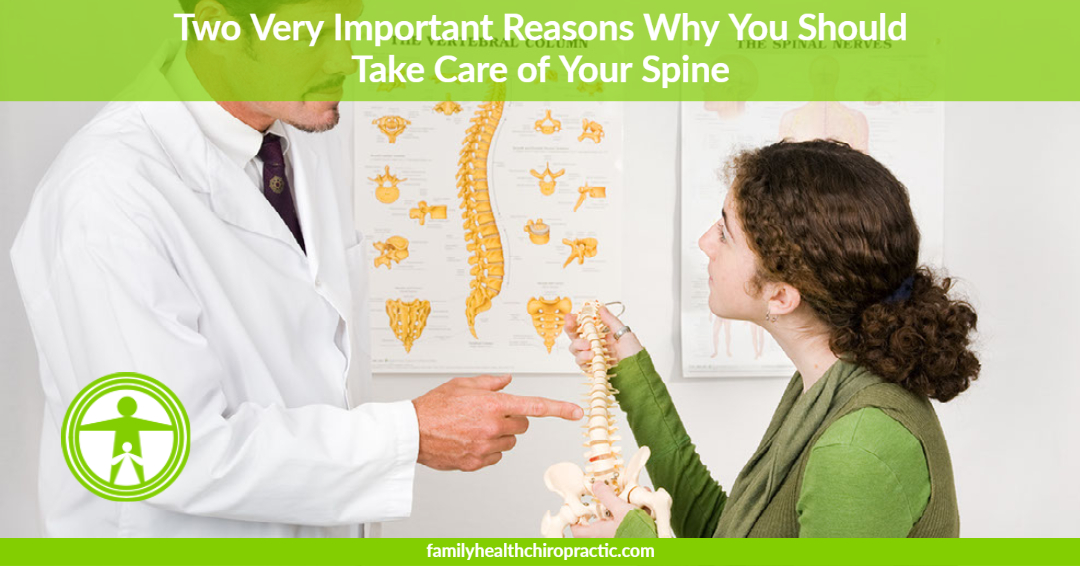The human spine is one of the most important organs of our body.
Without it, we’d be giant meat sacks rolling around the floor.
The spine gives our body structural support and integrity. It allows us to move freely to bend and twist and perform many amazing tasks.
The spine is also designed to protect our spinal cord. The spinal cord is a column of nerves that connects your brain with the rest of your body, allowing you to control your movements. Without a spinal cord, you could not move any part of your body, and your organs could not function. Therefore, keeping your spine healthy is so important.
In this article, I’m going to share with you the two most important functions of our spine to help you understand its significance.
Spine Anatomy
Before diving into the primary functions of the spine, let’s do an overview of the anatomy.
Your spine comprises 24 bones (as an adult) that stack on top of each other to create the spinal column. Between each bone, there are shock-absorbing cushions called discs that allow for spinal nerve roots to exit and prevent the bones from smashing each other.
Your spine also has ligaments that attach bones to other bones. Tendons that attach muscles to the spinal vertebrae allowing them to move and even joints (much like your elbow or knee joint) called facet joints. The facet joints link each vertebrae together and give them flexibility to move against each other.
Every single spinal vertebrae has a hole in the center, creating a tube that holds and protects the spinal cord and nerve roots.
The spine is made up of 3 sections: the cervical spine, thoracic spine, and lumbar spine.
All together, these anatomical structures allow for the two most important functions of your spine:
- Structural Support
- Armor and Protection of the Spinal cord and Nerves

The Spine Gives Structural Support
A healthy spine has three natural curves that make an S-shape. If you’re a patient of our office, then you should have a good understanding of why it’s so important to assess these curves and correct misalignments identified.
These curves absorb shocks to your body and protect your spine from injury. If you lose these curves, your body will break down prematurely, speeding up osteoarthritis and degeneration.
The structural support system of the spine is made up of:
- Vertebrae: Each individual bone that stacks up to make the spinal column. The spinal canal is a tunnel that houses the spinal cord and nerves, protecting them from injury. Most vertebrae move to allow for a range of motion. The lowest vertebrae (sacrum and coccyx) are fused together and don’t move.
- Facet joints: These spinal joints have cartilage (a slippery connective tissue) that allows vertebrae to slide against each other. Facet joints let you twist and turn, and they provide flexibility and stability. These joints can develop arthritis and cause back pain or neck pain.
- Intervertebral disks: These flat, round cushions sit between the vertebrae and act as the spine’s shock absorbers. Each disk has a soft, gel-like center (the nucleus pulposus) surrounded by a flexible outer ring (the annulus). Intervertebral disks are under constant pressure. A herniated disk can tear, allowing some of the nucleus’ gel substance to leak out. Herniated disks (also called bulging, slipped or ruptured disks) can be painful.
- Spinal cord and nerves: The spinal cord is a column of nerves that travels through the spinal canal. The cord extends from the skull to the lower back. Thirty-one pairs of nerves branch out through vertebral openings (the neural foramen). These nerves carry messages between the brain and muscles.
- Soft tissues: Ligaments connect the vertebrae to hold the spine in position. Muscles support the back and help you move. Tendons connect muscles to bone and aid movement.
Failure to maintain normal alignment of the spine will cause abnormal motion and function of the above-mentioned structures.
This leads to individual vertebrae breaking down, resulting in spondylosis. Spondylosis is an umbrella term for different age-related degeneration in the spine.
Spondylosis leads to facet arthritis, weakened spinal disks, impingement of the spinal cord and nerves and chronic soft tissue dysfunction such as muscle spasms, weak or damaged ligaments and tendons.

The Spine is the Armor and Protection of the Spinal Cord and Nerves
The spinal cord is a column of millions of nerve fibers that run through your spinal canal. It extends from the brain to the area between the end of your first lumbar vertebra and top of your second lumbar vertebra. At the second lumbar vertebra, the spinal cord divides into several groups of fibers that form the nerves that will go to the lower half of the body. For a small distance, the nerves actually travel through the spinal canal before exiting out the neural foramen. This collection of nerves is called the cauda equina, while it is still inside the spinal canal.
The nerve fibers in your spinal cord branch off to form pairs of nerve roots that travel through the small openings (foramina) between your vertebrae. The nerves in each area of the spinal cord connect to specific parts of your body. Therefore, damage to the spinal cord can cause paralysis in certain areas and not others – it depends on which spinal nerves are affected.
Paralysis is an extreme example of a spine injury, but millions of people suffer from spine related dysfunctions because of abnormal alignment and motion of the spine itself.
When the spinal column becomes dysfunctional, the quality of information being transmitted from the brain to the body is diminished.
Eventually, this diminished nerve talk is going to cause problems down stream affecting muscles, organs and organ systems.
The nerves of the cervical spine go to the upper chest and arms. The nerves in your thoracic spine go to your chest and abdomen. The nerves of the lumbar spine then reach to your legs, bowel, and bladder. These nerves coordinate and control all the body’s organs and parts, and let you control your muscles.
The nerves also carry electrical signals back to the brain that allow you to feel sensations. If your body is being hurt, your nerves signal the brain that you have been hurt. Damage to the nerves themselves can cause pain, tingling, or numbness in the area where the nerve travels.
Major Conditions Caused By Spinal Deterioration
Although most people seeking to treat their spine will do so because of some form of pain, repeated injury and dysfunction of the spine (mechanical/structural problems) eventually lead to organ system dysfunction.
A few of the most common structural conditions related to an unhealthy spine include:
- Arthritic conditions, such as ankylosing spondylitis (AS).
- Back strains and sprains.
- Birth defects such as spina bifida.
- Bone spurs (jagged edges on vertebrae that put pressure on the spinal cord and nerves).
- Curvatures of the spine (scoliosis and kyphosis).
- Neuromuscular diseases, such as amyotrophic lateral sclerosis (ALS).
- Nerve injuries, including spinal stenosis, sciatica and pinched nerves.
- Osteoporosis (weak bones).
- Spinal cord injuries, including spinal fractures, herniated disks and paralysis.
- Spine tumors and cancer.
- Spine infections like meningitis and osteomyelitis.
A few of the most common functional conditions related to an unhealthy spine include:
- Direct neural tissue damage (neurogenic pain and depression).
- Lung dysfunctions (asthma and respiratory distress).
- Cardiovascular dysfunctions (Orthostatic hypotension and autonomic dysreflexia and arrhythmia).
- Urinary system (neurogenic bladder, incontenence, kidney damage).
- Skeletal muscle dysfunction (muscle contracture, spasms and atrophy).
- Bone and soft tissue (osteoporosis, weak tendons and ligaments).
- Sexual Dysfunction.
- Immune Dysregulation.
- Cognitive Dysfunction.
How To Keep Your Spine Healthy
This should go without saying, but the first step is to assess the state and health of your spine. Do you have normal alignment and movement of the spine? Are the structures attached to the spine fully functional? Do you have normal spinal curvatures in the neck, mid and low back?
If you were to look into all the treatments available for addressing back pain, you’d find that the strongest levels of evidence are for strength training.
Strong back muscles can protect your spine and prevent back problems.
Therefore, it’s so important to incorporate daily back-strengthening and stretching exercises.
Exercises like planks strengthen the core (abdominal, side and back muscles) to give your spine more support.
Other protective measures include:
- Bend your knees and keep your back straight when lifting items.
- Lose weight if needed (excess weight strains your back).
- Maintain good posture.
- Get regular adjustments to fine tune and maintain flexibility of spinal joints



